I just signed up for my first weeklong meditation retreat. I have a history of back pain and am a little scared of all that sitting. Is there anything I can do to prepare?
When I attended my first meditation retreat, I had the exact same issue. Within two days of sitting, my lower back began to hurt. I tried to sit ramrod straight and stretch on every break, but no amount of adjustment seemed to ease what was progressing from an intermittent discomfort to a constant ache. At the meditation interview, I threw all hopes of profundity out the window and shared my back troubles with the sensei. He offered me a simple piece of advice: “Get to know this pain.”
Since then, I’ve learned that good posture is integral to meditation practice. Back pain is often the result of poor postural habits magnified by long periods of sitting. Strengthening the core can infuse time spent on the cushion with ease and energy as one’s muscles work efficiently to support the spine. The following four exercises, adapted from the Pilates method of exercise, will provide tools to find optimum alignment; to strengthen key muscles of the pelvis, abdomen, and spine; and to alleviate lower back pain.
Exercise 1
Finding Your Natural Pelvis
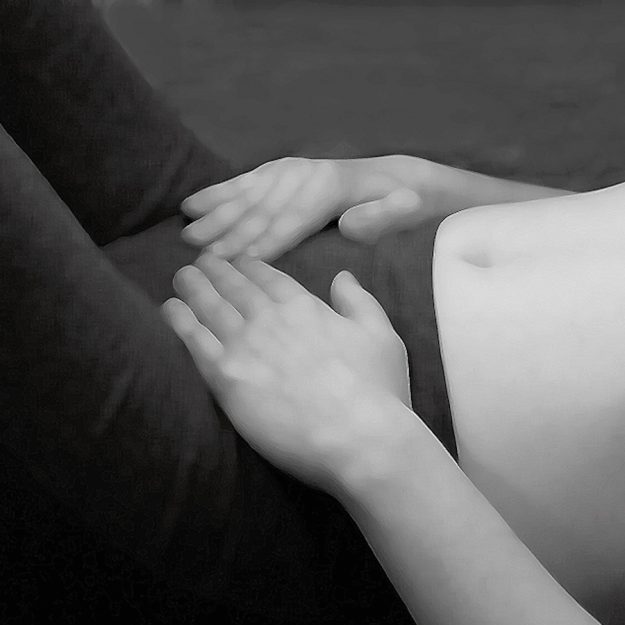
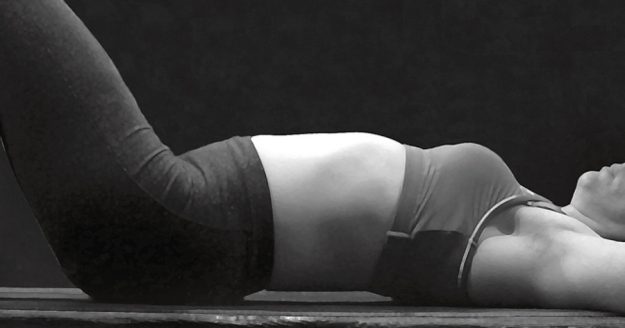
The back has three natural curves that facilitate weight distribution. One of the roles of the core is to help stabilize these curves while you sit and stand. To find your neutral pelvis, start by lying on your back, knees pointed toward the ceiling, feet flat on the floor in line with your sitting bones (the bones you feel when sitting on a hard surface). Take the heels of your hands and place them on the top of your hip bones, angling your fingers down to rest on your pubic bone. [illustration A] Keeping your hands in place, round and arch your spine [ill. B], rolling from your tailbone to the top of the lower back without lifting your pelvis off the floor. Your neutral pelvis is the spot where your hip bones and pubic bone are on the same plane. You will feel a slight space beneath your low back and the floor. Keep in mind that this is a process. You may not feel immediately comfortable in your ideal neutral position, so proceed with compassion. The body will open itself in time.
Exercise 2
The Scoop
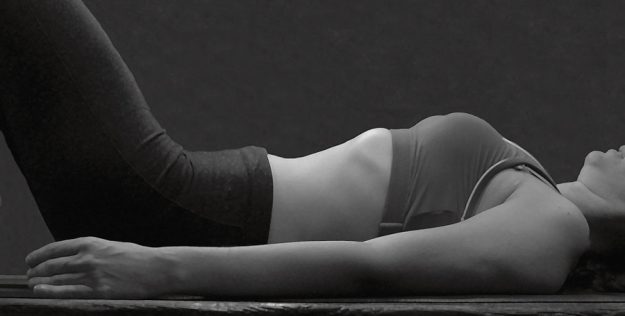
The abdominal wall is composed of four layers, the deepest of which is the transversus abdominis, a muscle that compresses the abdominal contents. To access the transversus, lie down as you did above and find your neutral pelvis. Inhale. On the exhale, start by pulling in the belly as though you were attempting to button a pair of tight jeans. [ill. C] Keep this engagement and inhale again, sending air into the upper back portion of the lungs. Next, forcefully exhale through soft lips, loud enough that you can hear it. Feel the waistline drawing in toward your spine and maintain that engagement. Inhale again into your upper back. Contract the upper fibers of the abdominals so that your ribcage will settle toward the floor. Take a peek down at your abdomen. You will notice that the wall of your belly is in a scooped position. Repeat this entire exercise until you can find your Scoop easily. Start with ten and work your way up to fifty repetitions.
Exercise 3
Pelvic Floor Engagement
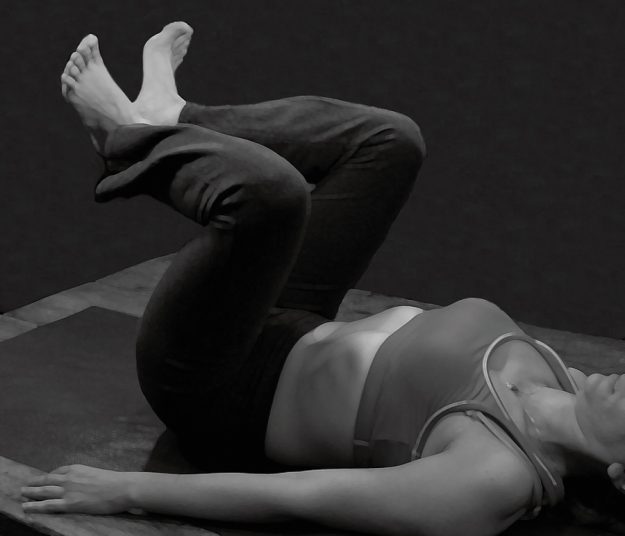
The pelvic floor is the trampoline of muscle at the base of the body suspended between the pubic bone, the sitting bones, and the tailbone. Learn- ing how to engage these muscles in concert with the Scoop is the key to pelvic stability. To find your pelvic floor, lie on your back with your arms at your side and your legs in frog position—knees bent and angled toward the armpits, legs relaxed over your torso, heels touching [ill. D]. Press your heels together to activate your inner thighs. Draw the muscles of your pelvic floor up toward the center of the body by engaging your bladder control muscles. Hold for a slow count of ten. Repeat three to five times.
Exercise 4
Multifidus Engagement
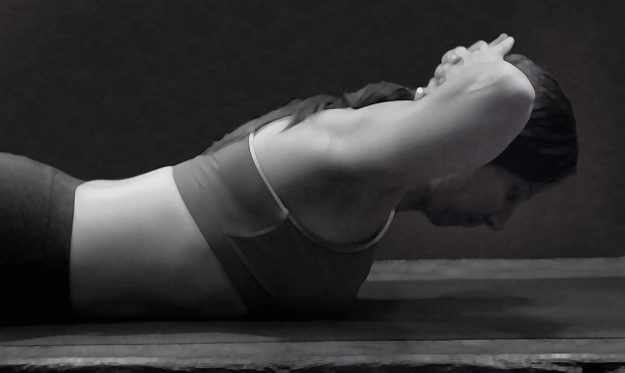
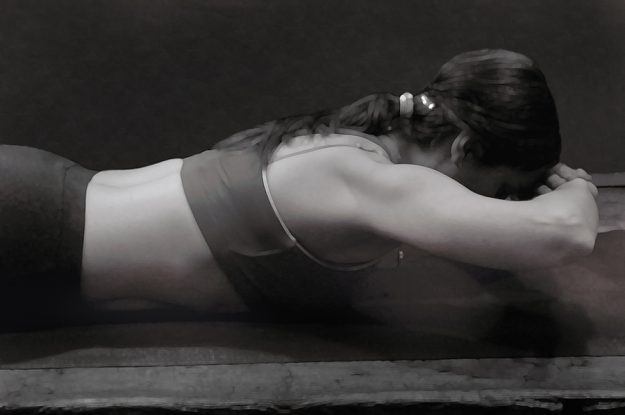
The multifidus comprises tiny muscles that hug the spine and promote spinal extension. To access the multifidus, lie on your stomach with your legs resting on the floor. Interlace your fingers and place them behind the head. Activate the Scoop and the Pelvic Floor. Press your pubic bone down to cultivate length in your lower back. Extend your upper torso toward the ceiling, pressing your head strongly into your hands [ill. E]. Now go easy: lift only three to five inches, or as high as you can without compressing your lower back. You should feel the multifidus kicking in as your head presses into your hands. Remain extended and shift your hands to rest your forehead on the back of your fingers [ill. F]. Press into your hands as you lower your torso back to the floor. Repeat six times.
***
Just like meditation, good posture requires consistent practice. Incorporate these exercises into your fitness routine three times a week and you will condition your body for a lifetime of strong meditation practice. And like the sensei advised, you, too, will have gotten to know this back pain, just in time for it to fade away.
Thank you for subscribing to Tricycle! As a nonprofit, we depend on readers like you to keep Buddhist teachings and practices widely available.